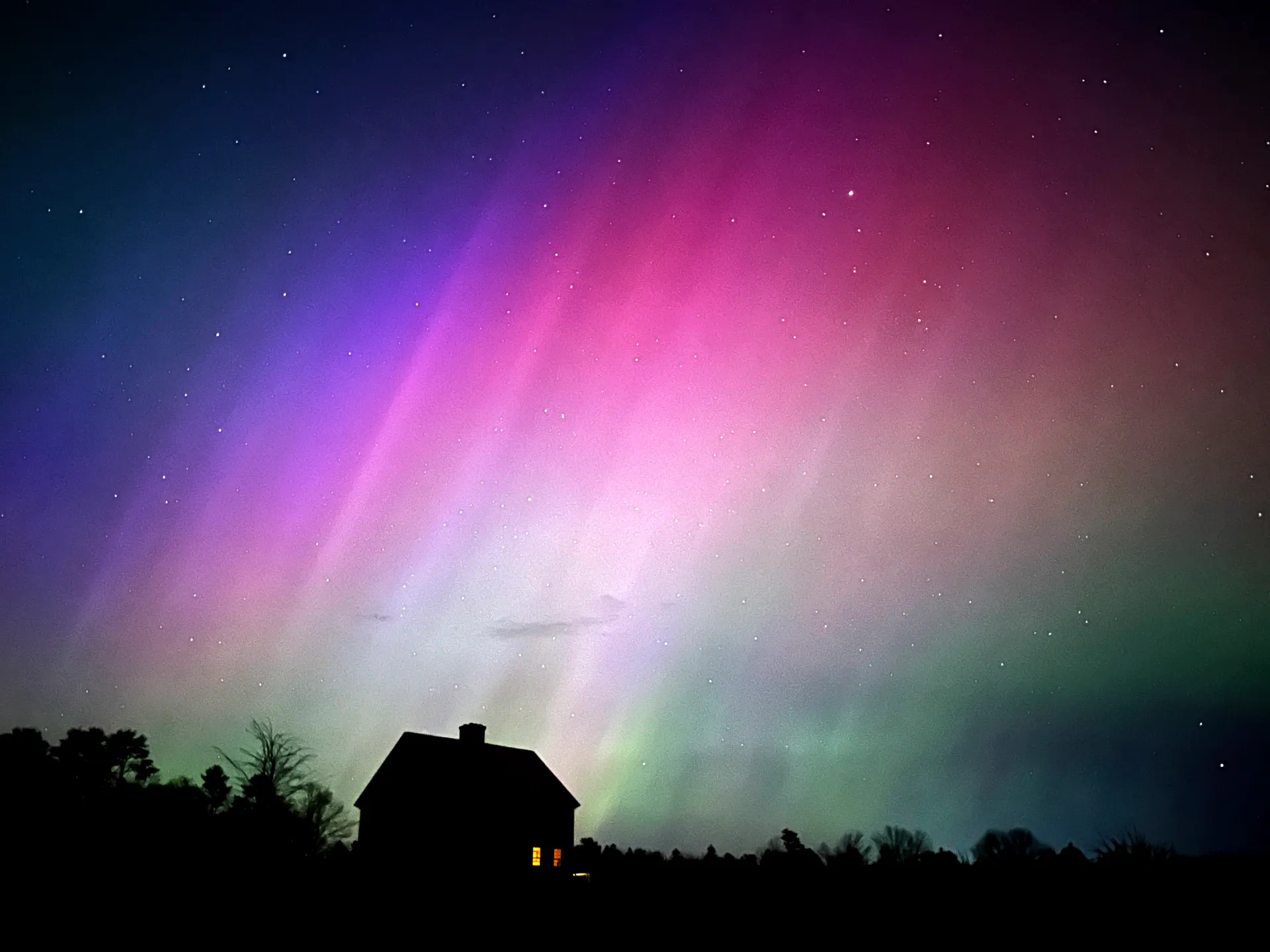A stunning display of auroras graced skies across various parts of the globe for the second consecutive night on Saturday. This remarkable celestial phenomenon, typically confined to the far northern latitudes and often referred to as the “northern lights,” was ignited by a potent solar storm that is anticipated to persist into Sunday.
The initial surge of auroras, accompanied by vibrant hues of pink, green, and purple, captivated spectators from France to the United States to Tasmania on the previous night. Eric Lagadec, an astrophysicist, described the experience as potentially historic, urging enthusiasts to seek out unobstructed views to the north for optimal sightings.
As reports of sightings trickled in from the United States late on Saturday, they appeared slightly subdued compared to the previous night’s spectacle. The solar storm, triggered by several coronal mass ejections (CMEs) expelling plasma and magnetic fields from the Sun, began on Friday afternoon GMT, according to the National Oceanic and Atmospheric Administration’s Space Weather Prediction Center.
The excitement surrounding this event resonated globally, with awe-inspiring images flooding social media platforms from locations as diverse as Mont Saint-Michel in France to Payette, Idaho, and Tasmania. Unlike solar flares, which reach Earth at the speed of light, CMEs travel at a slower pace, averaging around 800 kilometers per second. These particular CMEs originated from an expansive sunspot cluster, dwarfing our planet in size.
Beyond the visual spectacle, the fluctuating magnetic fields associated with geomagnetic storms can induce currents in power lines, potentially leading to blackouts and engineering challenges with pipelines. Furthermore, spacecraft are vulnerable to increased radiation levels, although Earth’s atmosphere provides protection. NASA closely monitors astronaut safety, even adjusting their positions within the International Space Station during such events.
Interestingly, geomagnetic storms can disrupt the navigation abilities of certain species, including pigeons, affecting their homing behavior. Notably, the Carrington Event of 1859 remains the most powerful geomagnetic storm on record, underscoring the potential impact of such phenomena on modern technology.
While concerns initially arose about disruptions to power and communication networks during this recent storm, reports have thus far been limited to minor irregularities. Elon Musk reassured that his Starlink satellite internet system, comprising thousands of satellites in low Earth orbit, has withstood the pressure thus far. However, China issued a “red alert,” anticipating communication and navigation disruptions across most regions of the country.
Despite these challenges, the awe-inspiring auroras served as a reminder of the dynamic interplay between the Sun and Earth’s magnetosphere, captivating spectators worldwide with their celestial dance.










